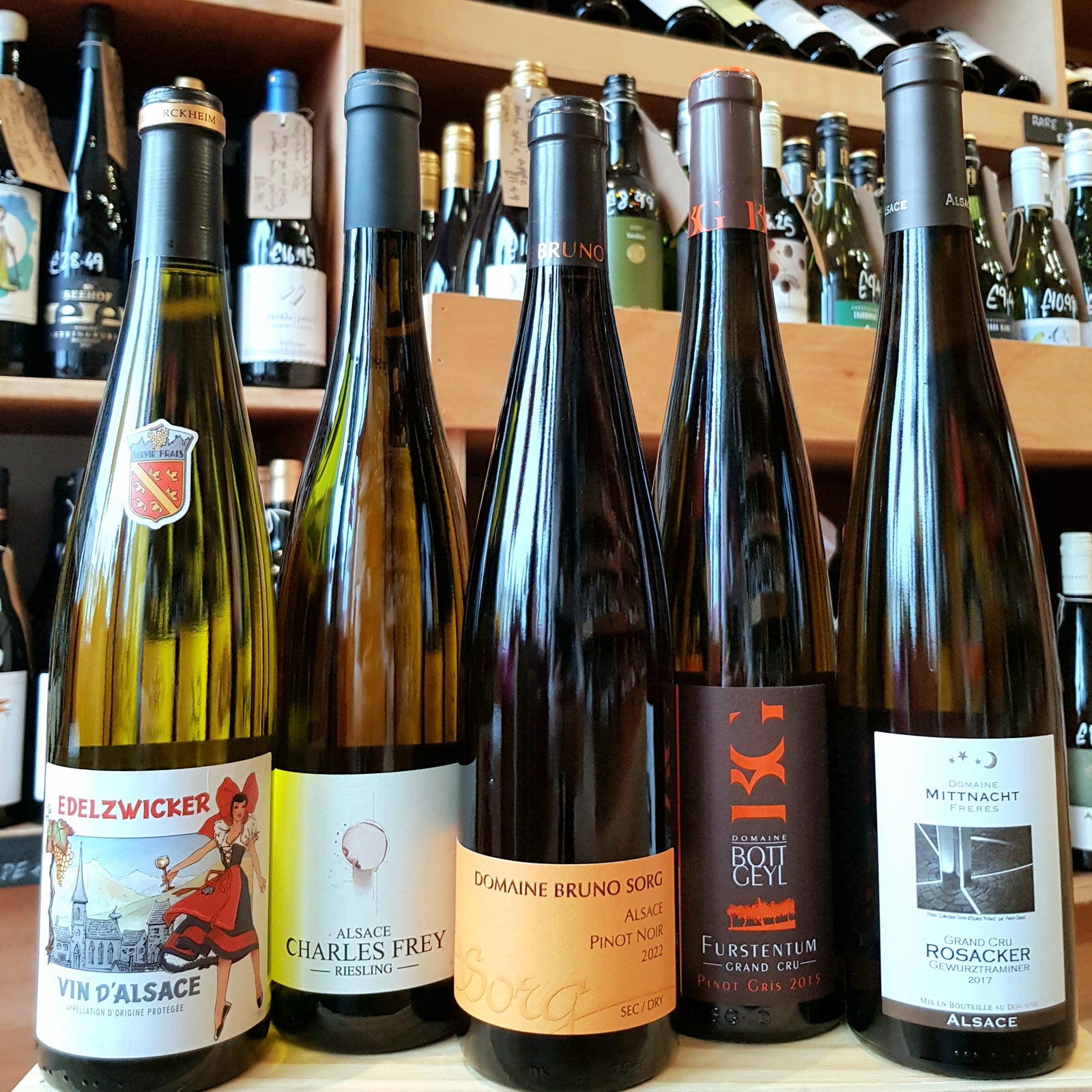
Having covered some well-known and well-liked grape varieties in recent blog posts I am turning my attention here to a more confusing category. Malvasia (or Malvazia, Malvazija, Malmsey...) is a name given to a large number of grape varieties, typically found around the Mediterranean. Largely white grapes, the different wines within this family can range from bone dry and minerally to richly scented with floral and exotic aromas.
How did these grapes come to share this common name? We have to look a long way back in history, likely before the Middle Ages. The Greek port of Monemvasia was one of the great export hubs of wine at this time, shipping wines from the Peloponnese and Crete across Europe. This town, at the time belonging to Venice and known in Italian as Malvasia, lent its name to the wines originating from the town and thusly to the grape varieties they were made from.
Malvasia Bianca
This is the 'parent' Malvasia, which on its travels throughout the Mediterranean has crossed with other vines in the wild to give us many of the other varieties. Malvasia Bianca is planted widely in Italy and commonly used to produce sweet wines such as Vin Santo and Malvasia di Lipari. With a sweetly perfumed bouquet, it often draws comparisons to Muscat.
Birichino Malvasia Bianca, Monterey, California 2021 - £28.50

Many of California's first vines were planted by immigrants from the south of Italy and among the grapes they brought across the Atlantic was Malvasia Bianca. Alex Krause and John Locke of Birichino, always looking to celebrate the old-vine heritage of their home state, produce this beautiful white wine from Malvasia grown in cool Monterey county.
Bursting with aromatic florals and sweet fruit, particularly orange blossom, mango and nectarine, you expect a wine with some sweetness from the nose. However, the palate is dry, shot through with juicy acidity. Rounded and long, the peach and apricot morphs into more of a citrus character in the finish. A really fun wine to pair with different foods, try this with Vietnamese food or a ceviche for a truly unique match.
Clos de Lom Malvasia, Valencia, Spain 2021 - £17.99

The majority of Malvasia found in Spain is Malvasia Bianca (the Catalan Malvasia de Sitges is one exception) and it can make beautifully soft and scented wines in the Spanish sunshine.
Clos de Lom is a Valencian estate founded in 1836 by the French Dupuy de Lome family and the wine is still made in the underground cellars dug in the 19th century. Acquired in the 1950s by the Sanz family who expanded the vineyards, planting more of the Spanish varieties best suited to their local climate. 3 generations of the family are now involved in the business, with expert winemaker Pablo Ossorio directing work in the cellar.
Their Malvasia, grown at 640m altitude in limestone soils, is a beautiful balancing act between bold ripe fruit and crisp acidity. A gorgeous nose of yellow peach, marmalade and lychee leads into a full-bodied palate. The fruitiness continues with pear and red grapefruit lingering through the dry finish. Rich and flavoursome seafood dishes such as prawns in garlic sauce make a delicious pairing for this wine, but it is absolutely wonderful enjoyed simply with some nibbles as well.
Portuguese Malvasias
References to Malmsey can be found throughout English historical texts and literature, and this English name for Malvasia found its way to the island of Madeira. The Malvasia used to make this, the sweetest style of Madeira, is a local variety known as Malvasia di Candida.
In mainland Portugal, the Malvasia Fina grape is grown throughout the country for use in dry white wines. It is most common in the Douro valley, where it is often used as part of the blend for white Port. Malvasia Fina may actually be totally unrelated to Malvasia Bianca, which explains why rather than a floral and fruity wine, it produces subtler wines, with hints of beeswax and smoke.
Barbeito Malvasia Reserva 5 Year Old, Madeira, Portugal - £18.50 (500ml)

In 1993 Ricardo Freitas took over the reigns of the Barbeito company founded by his grandfather. He stopped the bulk exporting of wine, opting to focus on estate bottled Madeira, and has worked to cultivate close relationships with growers across the island.
This is a traditionally made Madeira, with fortification stopping fermentation to leave significant residual sweetness. The wines are then aged for 5 years in old oak casks in warehouses exposed to the heat on the island, this is known as the Canteiro method.
Complex and nutty thanks to this unique ageing, with honey, walnut and dried apricot aromas. On the palate the sweet raisin and orange peel character is balanced beautifully by acidity, preventing the wine from ever feeling cloying. A versatile wine, pairing well with desserts such as creme brulee, aged cheeses or charcuterie.
Pormenor Branco, Douro, Portugal 2021 - £23.50

Pormenor, meaning 'details' in Portuguese, is the project of Pedro Coelho, who set out to highlight the unique details of old Douro vineyards. The approach to winemaking is centred around the work in the vines, with a minimal intervention approach in the cellar - natural yeast ferments, no additions beside minimal SO2 use, no new oak barrels - allowing the character of the terroir to speak for itself.
The Branco comes from traditional field blended vineyards at a minimum of 40 years old. Alongside Malvasia Fina there is Rabigato, Gouveio and Codega de Larinho. Planted at altitude between 400 and 650m on schist soils which impart great freshness and minerality to the wine.
Stony minerality is the first impression, with sharp lime and subtle hints of pineapple on the nose. Intense and precise on the palate, with superb persistence on the bone-dry citrus finish. Shellfish or sole, simply cooked will bring out the best in this excellent white.
Malvasia Nera
There is also a red Malvasia! Found throughout Italy, but especially prominent in the southern region of Puglia. With its deep colour and warm chocolatey fruit, it is popular as a blending grape with Negroamaro and Primitivo, and was in the past used to add colour to Tuscan Sangiovese in poor vintages.
Verso Rosso Salento, Puglia, Italy 2020 - £14.99

From Salento, at the most southerly tip of Italy's heel, this is a rich and smooth blend of Negroamaro, Primitivo and Malvasia Nera. A portion of the grapes are dried before fermentation, in the apassimento technique, which concentrates the ripeness and flavour. It then ages for three to four months in oak barrels, softening the mouthfeel and contributing some spicy aromas.
Dark and sweet aromas of roasted plums, morello cherry and dark chocolate make for an alluring first impression. This is a full-bodied wine, showing the warmth of the Puglian climate, with jammy blackberry and raisin notes and sweet baking spices. A great option for pairing with rich stewed meats, like oxtail or lamb shanks.









Leave a comment (all fields required)